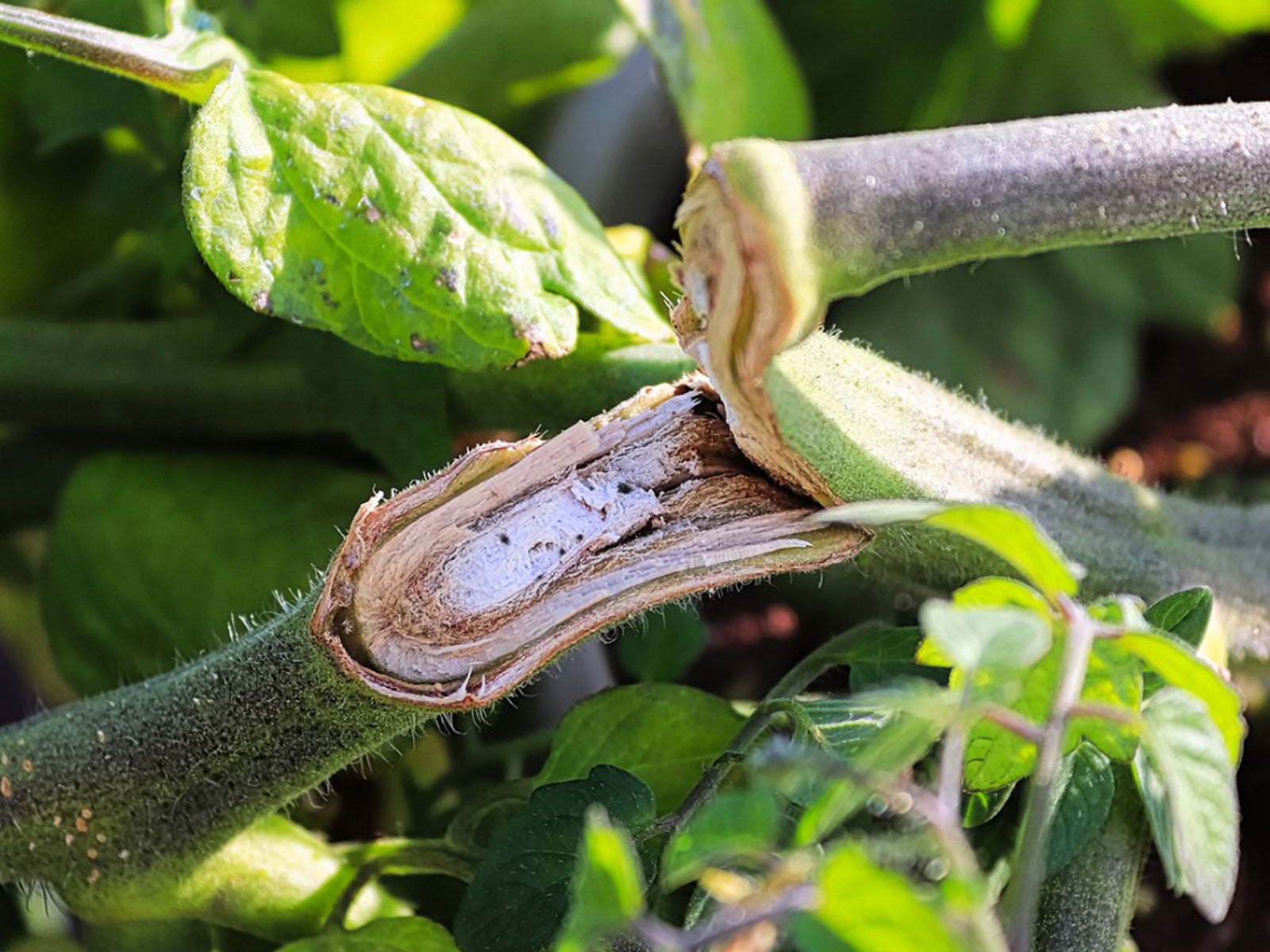Taping And Splice Grafting Broken Plants: How To Reattach Broken Stems


There are few things more crushing than discovering your prize vine or tree has broken a stem or branch. The instant reaction is to try some sort of plant surgery to reattach the limb, but can you reattach a severed plant stem?
Fixing injured plants is possible as long as you borrow some rules from the process of grafting. This procedure is used to meld one type of plant to another, generally onto rootstocks. You can learn how to reattach broken stems on most types of plants.
Can You Reattach a Severed Plant Stem?
Once a stem or branch has broken off of the main plant, the vascular system that feeds and waters that limb is cut off. This would mean the material would die in most cases. However, if you catch it quickly, you can sometimes splice it back onto the plant and save the piece.
Splice grafting broken plants is a method that will attach the main body back onto the broken stem, allowing the exchange of important moisture and nutrients to sustain the damaged stem. A simple fix can allow you to repair broken climbing plants, bushes, or even tree limbs.
How to Reattach Broken Stems
Fixing injured plants with stems that have not been completely severed is easiest. They still have some connective tissue to feed the tips of the damaged piece, which will help encourage healing and health. The process starts with a stiff support of some kind and plant tape. You are basically making a splint to hold the broken material solidly upright and then some sort of tape to bind it tightly to the healthy material.
Depending on the size of the broken piece, a dowel, pencil, or stake can be used as the stiffening object. Plant tape or even old pieces of nylon are ideal for binding the stem. Anything that expands can be used to reconnect the broken piece to the parent plant.
Splice Grafting Broken Plants

Choose a splint suitable for the size of the stem or limb. Popsicle sticks or pencils are great for smaller materials. Larger tree branches require thicker wood or other hard structures to support the damaged part.
Sign up for the Gardening Know How newsletter today and receive a free copy of our e-book "How to Grow Delicious Tomatoes".
Hold the broken edges together and place the stake or splint along the edge. Wrap closely with a stretchy binding such as nylons, plant tape, or even electrical tape. The binding needs to have some give so the stem can grow. Brace the stem if it is dangling so there is no additional pressure on it as it heals. This is especially important when you repair broken climbing plants.
What Happens Next?
Fixing injured plants with a splice graft is no guarantee it will survive the treatment. Watch your plant carefully and give it excellent care. In other words, baby it.
Some softer stemmed plants will not heal and the material may mold, or bacteria or fungus might have been introduced into the plant.
Thick, woody stems such as tree branches may have exposed cambium which doesn't seal and will interrupt the flow of nutrients and moisture to the damaged limb, slowly killing it.
You can repair broken climbing plants like clematis, jasmine, and indeterminate tomato plants. There are no promises, but you really have nothing to lose.
Try splice grafting broken plants and see if you can save damaged material and the beauty of your plant.

Bonnie Grant is a professional landscaper with a Certification in Urban Gardening. She has been gardening and writing for 15 years. A former professional chef, she has a passion for edible landscaping.